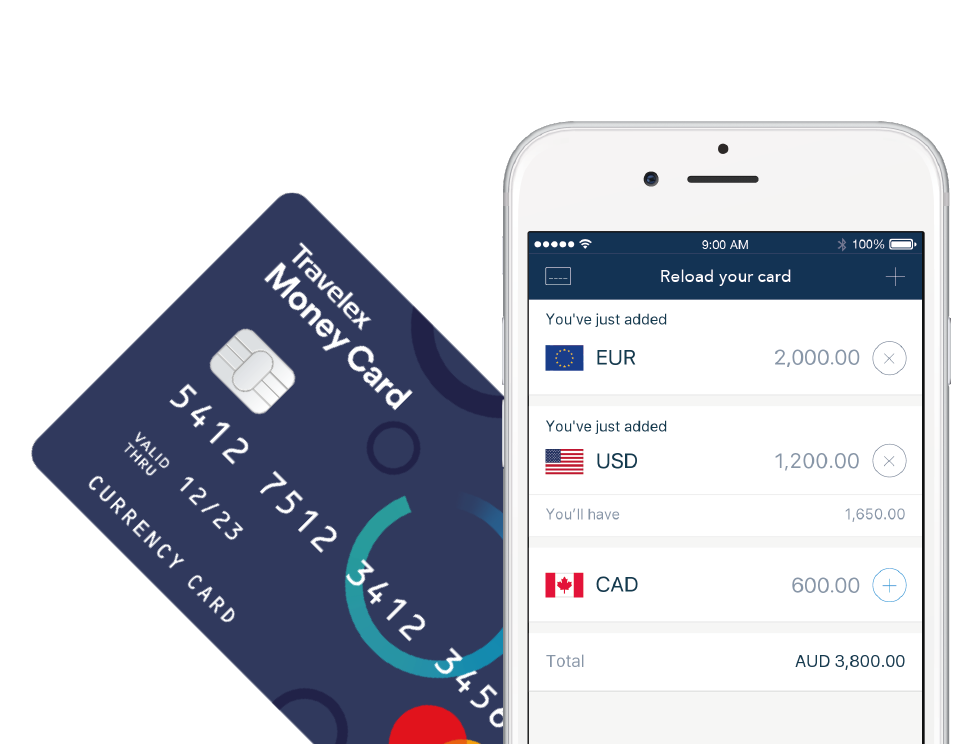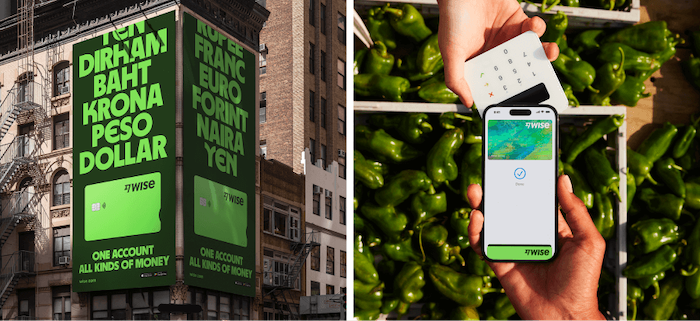International Debit Cards: What are the Best Options in New Zealand? [2023]
If you’re planning your next trip overseas – or if you frequently shop online with retailers based abroad – you may be wondering if it’s worth getting an international debit card.
International debit cards can provide a way to cut the costs of currency conversion and foreign payments, making it cheaper and more convenient to spend overseas. Team your card with a low cost multi-currency account like the Wise Account, to benefit from easy money management across currencies with no ongoing costs to worry about.
This guide walks through why an international debit card can be a smart option, and some of the best cards available for New Zealand citizens and residents. Let’s get started.
Best international debit cards for travel: A comparison for New Zealand
Choosing the best international debit card for you will require a bit of research. To help you get started we’ve picked out some of your favorite international debit cards for New Zealand citizens and residents – here’s what you need to know:
| Provider | Key Features |
|---|---|
| Wise Card |
|
| Travelex |
|
| Westpac Global Currency Account |
|
| ANZ Account |
|
| Air New Zealand OneSmart |
|
Wise card
Open a multi-currency Wise Account online or in the Wise app for free, to hold and exchange 50+ currencies with the mid-market exchange rate. You’ll be able to order your linked international debit card for a low one time fee of 14 NZD , to spend in 170+ countries.
Wise accounts also come with local bank details for 10 currencies including major currencies like USD, EUR, CAD and GBP so you can get paid fee free easily.
Pros of the Wise card
- No ongoing card or account charges
- Hold and exchange 50+ currencies with the mid-market rate
- Get paid into your Wise account from 30+ countries, fee free
Cons of the Wise card
- 14 NZD fee to get your first card
- Some transaction fees may apply
Travelex card
It’s easy to order your Travelex travel money card online for next day collection in a Travelex store – or if you’re in a hurry you can simply visit a store and order one on the spot. Once you have a card you can add funds in NZD or any of the other supported foreign currencies. Wherever currency conversion is required – when you switch from one currency to another within the account, or when you spend a currency you don’t hold for example, the Mastercard rate will apply, with a 4% conversion fee.
Pros of the Travelex card
- 9 supported currencies including GBP. EUR and USD
- Pick one up instantly in a Travelex store
- No fee to get the card in the first place
Cons of the Travelex card
- 4% currency conversion fee
- Costs apply for card inactivity and when you come to close your account

Westpac Global Currency card
Westpac’s Global Currency card supports 9 major currencies and has fewer fees compared to some alternative prepaid card options. There’s no fee to get the card in the first place, plus free ways to add funds, and no closure or cash out fee to worry about. However, when you switch currencies in the account there’s a markup on the exchange rate that you’ll be notified of at the time of exchange, plus a 2.95% margin if you’re spending a currency you don’t hold in your account.
Pros of the Westpac card
- 9 supported currencies
- No international ATM fee, no inactivity fee, no close fee
- Instant card load from your Westpac bank account
Cons of the Westpac card
- 5 to 10 business day delivery time
- 2.95% margin added to the Mastercard exchange rate when spending a currency you don’t hold
ANZ card
ANZ’s Visa debit card can be used globally, with a fairly low 1.3% foreign transaction fee to pay. Your base account will only be able to hold NZD in most cases, but your funds are then converted to the currency you need at the point of spending, using the live Visa exchange rate. That can make this card a convenient way to spend both at home and abroad, with no ANZ fee for overseas ATM withdrawals for those times you need cash.
Pros of the ANZ card
- No card order fee
- Link to your regular ANZ account for convenience
- Low foreign transaction fee of 1.3%
Cons of the ANZ card
- No multi-currency holding option
- Other account fees may apply, depending on the specific ANZ account you hold
Air New Zealand OneSmart card
The Air New Zealand prepaid Mastercard allows you to hold 8 foreign currencies, and earn Airpoints dollars as you spend. You’ll be able to add funds in the currency of your choice, with the Mastercard exchange rate used whenever conversion is needed, plus a 2.5% conversion fee. Then just tap to pay wherever in the world you happen to be.
Pros of the Air New Zealand card
- Earn rewards as you spend overseas
- 3 free ATM withdrawals every month
- No fee to get a card in the first place
Cons of the Air New Zealand card
- 2.5% currency conversion fees
- Debit card loads have a 1.5% fee
What is an international debit card?
International debit cards work much like your regular debit card, but provide features which are particularly useful when spending in foreign currencies. You’ll be able to use your card to make payments in person, often with contactless and mobile payment functions, to pay online and to make ATM withdrawals overseas.
There are several different types of international debit cards available for customers based in New Zealand, which we’ll look at in more detail a little later.
Types of international bank card
International cards can usually be broken into 3 categories: prepaid cards, debit cards from traditional banks and cards issued by specialist providers. Each card type has its own benefits and drawbacks – here’s a quick run through of what you need to know when you choose the right one for you.
Prepaid international debit card
Prepaid international debit cards, which are also called travel money cards, are usually issued by specialist providers. You’ll be able to order a card online or in some cases pick one up in a store, before topping up with dollars which can be converted for international spending. Prepaid cards have a range of fees which can include costs for topping up your account and converting to foreign currencies.
International card with traditional banks
If you get an international card from your regular bank you may need to specifically ask for your card to be activated for international spending, and a foreign transaction fee is likely to apply. You may also need to pay a foreign transaction fee whenever you convert from NZD to the currency in the country you’re in.
International card with neobanks and fintech providers
Getting a specific account and card designed for international travel can often be the cheapest and most convenient option available. You’ll be able to open and manage your account online or in an app, and depending on the account you select you may benefit from low transaction costs and currency conversion which uses the mid-market exchange rate.
International Debit Card fees
Here’s a comparison of the key costs involved in the 5 international debit cards we’ve looked at so far.
| Wise | Travelex | Westpac | ANZ | Air New Zealand | |
|---|---|---|---|---|---|
| Account fee | No fee | No fee | No fee | Varied fees based on the account you select | 1 NZD/month |
| Hold and exchange | 50+ currencies | 9 currencies | 9 currencies | NZD only | 9 currencies |
| Card fee | 14 NZD to get a card, no ongoing charges | No fee to get a card | No fee to get a card | No fee to get a card | No fee to get a card |
| ATM fee | Up to 2 withdrawals, to 350 NZD/month free
1.5 NZD + 1.75% after that |
No international ATM fee
2.95% domestic ATM fee |
No international ATM fee
4 NZD domestic ATM fee |
No fee | 3 free withdrawals a month, then fees apply which vary by currency (equivalent of around 3 NZD) |
| Foreign transaction fees | No fee to spend currencies you hold in your account
Currency exchange from 0.41% |
No fee to spend currencies you hold in your account
Currency exchange when adding funds has a 4% markup |
No fee to spend currencies you hold in your account
Currency exchange when adding funds has a markup set by Mastercard |
1.3% foreign transaction fee | No fee to spend currencies you hold in your account
Currency exchange when adding funds has a 2.5% markup |
| Exchange rate | Mid-market exchange rate | Mastercard rate + 4% conversion fee where required | Mastercard rate + 2.95% conversion fee where required | Visa exchange rate + 1.3% foreign transaction fee | Mastercard rate + 2.5% conversion fee where required |
| Close account fee | No fee | 10 NZD closure fee (+ 4 NZD/month account inactivity fee) | No fee | No fee | No fee |
How do international debit cards work?
As with your regular debit card, withdrawals and payments made with your international debit card will be deducted directly from your account balance. That can make it easier to budget, and ensures you won’t accidentally run into interest or penalty fees as you may with a credit card.
You’ll be able to use your international debit card to make foreign currency purchases, often with better exchange rates and lower fees compared to using a normal card for payments. International cards are usually quite convenient to order and activate – the entire process can often be done online or using an app.
How can I use an international debit card abroad?
You’ll be able to use your international debit card for payments and withdrawals anywhere the card’s network is accepted. International cards are commonly offered via the Visa and Mastercard networks, as these offer great global coverage.
Different international debit cards have their own terms and conditions, which can include pretty varied fees and charges, too. You’ll need to double check over all the fees applied by the card issuer – your bank or preferred specialist provider. To help, we’ll look at some of the best options out there to kickstart your research in just a moment.
Important fees to look at include any foreign transaction fee or currency conversion cost, and any charge to make ATM withdrawals.
You’ll also need to look out for fees applied by the ATM operator, and make sure to always pay in the local currency wherever you are to avoid the high fees that come with dynamic currency conversion (DCC) transactions. DCC is where you’re asked if you want to pay in dollars instead of the local currency when you’re abroad – it sounds convenient, but actually DCC can be an expensive option. Using your international debit card to pay in the local currency is almost always the better choice.
Does my debit card work internationally?
If you already have a debit card issued by your regular bank you may be wondering if you can just use that when you travel. In most cases it’ll be possible to use your New Zealand issued card overseas – however, you may run into relatively high fees.
It’s also worth remembering that if you get an international debit card from a traditional bank you may need to inform them of your travel plans to ensure your card can be safely used overseas.
How to request an international debit card
If you choose an international debit card from a traditional bank you’ll usually need to open an account online or by visiting a branch. Specialist providers like Wise allow customers to register and order a card quickly via an app or desktop site. To show how it works, here’s a look at how to get a Wise international debit card for instant, low cost spending:
- Register for a Wise account online or in the Wise app
- Verify your account by uploading images of your ID documents
- Order your card online or in the Wise app, by paying a one off charge
- Your card will arrive in the post soon after
Click here to read more about Wise
What are the transaction fees applied to an international debit card?
Using an international debit card can make it cheaper to spend in foreign currencies. However there are still likely to be some costs to pay which can vary by provider. Here are the most important ones to watch out for.
Foreign transaction fee
International debit cards may charge a foreign transaction fee or apply a fee for currency conversion. This is usually calculated as a percentage of the cost of the transaction. With standard bank debit cards, the foreign transaction fee you pay can often be around 3% of the total cost. International cards can be cheaper – with Wise for example, currency conversion fees start at around 0.41%.
Withdrawal fee
Most international debit cards will have an ATM withdrawal fee, although this may be waived if you use specific ATMs. You may also find your card allows you to make withdrawals to a fixed limit for free, before applying a charge per transaction.
The operator of the ATM may also charge a fee, especially if you’re using a standalone ATM in a store, bar or shopping center.
Advantages of the international debit card
Still unsure if an international debit card is right for you? Here are a few advantages to consider:
- Depending on the account you choose you may benefit from no foreign transaction fee and mid-market rate currency conversion
- Accounts are usually easy to set up, and can often be managed via an app for convenience and security
- Make local cash withdrawals wherever you are in the world, to avoid high fees to get your travel spending money
- Easy to budget and manage your international spending with no interest fees to pay
Are there any limitations on international debit cards?
International debit cards aren’t always the best option. Before you decide to get a new card, consider these drawbacks:
- You may not be able to use your debit card to hire a car, or pay at the pump when buying fuel
- Debit cards may not be accepted for security deposits
- Accounts may have holding limits which mean you can’t use them for high value spending
- Chargebacks and refunds may take longer to get back to you
What to look at when choosing an international travel debit card
International debit cards are often linked to online or mobile accounts which let you manage your money easily on the go. There are several great providers available – and the card that suits you will depend on how you expect to use it. Here are a few things to consider when you choose:
- How can you access and manage your money – is the app or online service intuitive and easy to use?
- Can you hold and spend the currencies you need with your selected card?
- Is there a monthly fee for your account – or a minimum balance you need to know about?
- What are the currency conversion fees and how easy is the process?
- What exchange rate is used when you convert currencies?
- Is there a cost for making ATM withdrawals with your card – at home or abroad?
- How can you get customer support, and what languages is help available in?
One of the most important things to look at when selecting an international travel debit card will be the costs of currency exchange. The full fee you pay for converting currencies can be spread across an upfront conversion fee and a markup added to the exchange rate. If markups are used on the exchange rate that can mean you’re paying more than you think for your foreign spending – make sure you know the full details for your chosen account before you sign up.
Conclusion: what is the best international debit card for travel?
Having an international debit card for your foreign currency spending can be cheap and convenient. It’s also far more secure than relying on carrying cash when you travel. There’s a pretty decent range of international debit cards available for New Zealand based customers, including cards from global banking brands and specialist providers. Use this guide to compare a few options and decide which might suit you best.
International Debit Cards for Travel FAQ
What is the best debit card to use abroad?
International debit card fees do vary between providers and can include currency conversion or foreign transaction fees, and charges to make ATM withdrawals. You’ll often find costs are lower when you pick a specialist provider rather than a traditional bank.
Which debit cards do not charge foreign transaction fees?
Westpac has prepaid debit cards which allow you to hold a selection of currencies, and so don’t have foreign transaction fees for spending currencies you hold. However, conversion fees may apply when you switch over to foreign currencies in the first place. Alternatively, online specialists often have debit cards you can use overseas with no fees, and multi-currency functionality. Use this guide to pick the right one for you.
Which banks have no international ATM fees?
When you use an international ATM you may be charged by your own bank, or by the ATM operator. Your own bank is unlikely to reimburse you the fee if you’re charged by a different bank or ATM operator. Use in-network ATMs whenever possible.
How to get an international debit card?
Get an international debit card from your regular bank – or for an alternative that may be cheaper and more convenient, register with an online specialist provider and get an account and card without needing to leave home.
What’s the advantage of using an international travel card?
International debit cards usually have features which make it cheaper and more convenient to spend internationally. Get an online multi-currency account from a specialist provider and you may also be able to receive, hold and exchange dozens of currencies in the same account.
What happens if my card gets lost or stolen abroad?
You may be able to block or freeze your card through the bank or provider’s app, or by calling them directly. Depending on the situation you may also need to get a local police report. Ask your provider or bank for advice if you’re unlucky enough to lose your card overseas.
Can I transfer money abroad from a foreign currency account?
With specialist providers you’ll be able to send international payments from your multi-currency account to a broad range of countries and currencies – often with a far lower fee compared to your normal bank.


